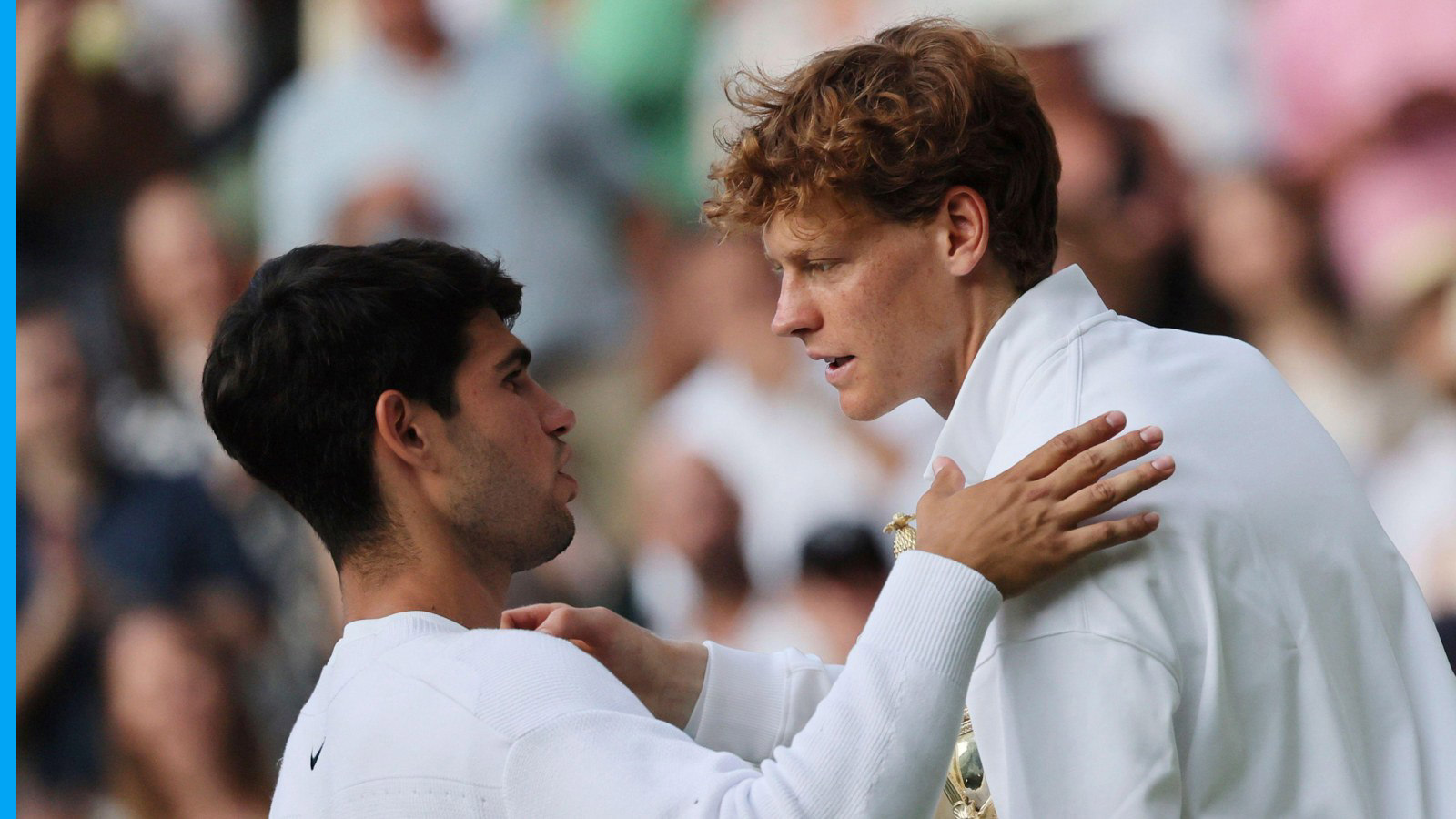Tennis, like any grand narrative, often grapples with the ghosts of its glorious past. Recently, former World No. 14 Jerzy Janowicz ignited a familiar debate, suggesting that while exceptional, the likes of Carlos Alcaraz and Jannik Sinner don`t quite capture the imagination with the same ferocity as the legendary triumvirate of Novak Djokovic, Rafael Nadal, and Roger Federer. It`s a sentiment many fans, perhaps justifiably, echo, prompting a closer look at what truly defines “interesting” in the evolving landscape of professional tennis.
Janowicz, who squared off against each member of the `Big Three` during his career – albeit without a victory – voiced a wistful longing for the era marked by fierce rivalries. He extended this nostalgia to include Andy Murray, Stan Wawrinka, and David Ferrer, a cohort that undeniably contributed to a golden age of men`s tennis. “Today, everything in tennis seems more boring to me; it seems everyone plays the same way,” Janowicz remarked at a Padel Cup event in Turin. “They were the most interesting to watch, much more than Jannik Sinner and Carlos Alcaraz, although they are also very strong.”
The Irresistible Allure of the Pantheon
To fully grasp Janowicz’s perspective, one must revisit the extraordinary era he champions. The “Big Three” weren`t merely dominant; they were a confluence of contrasting styles, unyielding wills, and compelling narratives. Roger Federer`s balletic grace and seemingly effortless elegance, Rafael Nadal`s gladiatorial intensity and revolutionary topspin, Novak Djokovic`s surgical precision and unbreakable mental fortitude – each brought a unique flavor to their clashes. Their epic finals, often spanning five sets and several hours, transcended mere sport, becoming cultural touchstones. They weren`t just winning; they were meticulously crafting history, pushing the boundaries of human endurance and skill with every exchange. And let`s not forget the broader “Big Four” dynamic with Andy Murray, whose own grit and tactical brilliance often disrupted their hegemony, or the explosive, unpredictable power of a Stan Wawrinka on his day. This era set an impossibly high bar, not just for statistics, but for the sheer theatricality and emotional investment it commanded.
The New Guard: Power, Pace, and Promise
Enter Carlos Alcaraz and Jannik Sinner, two young titans who have, in their relatively short careers, already ascended to the pinnacle of the sport. Alcaraz, with his electrifying all-court game, a dizzying array of drop shots, and a smile that could disarm a hostile crowd, has brought a youthful exuberance back to the ATP Tour. His powerful groundstrokes, incredible speed, and audacious shot-making are undeniable. Sinner, on the other hand, embodies a more measured, yet equally devastating, approach. His clean hitting, laser-like accuracy from the baseline, and unwavering focus have seen him dismantle opponents with startling efficiency. Both have delivered Grand Slam triumphs and numerous memorable victories, showcasing a level of athleticism and aggressive baseline play that defines modern tennis. They are, by any objective measure, exceptional.
Is “Sameness” the New Standard, or Just Evolved Efficiency?
Janowicz`s critique of “sameness” is intriguing and deserves a closer look. Modern tennis has indeed seen a degree of homogenization in playing styles. The relentless pursuit of raw power, the emphasis on athletic defense, and increasingly standardized coaching methodologies have perhaps led to fewer stylistic outliers. The serve-and-volley specialists are all but extinct, replaced by players who can hit winners from anywhere on the court with remarkable consistency. But is this inherently “boring,” or simply the natural evolution of a sport constantly seeking marginal gains in efficiency and aggression? Perhaps the “sameness” Janowicz perceives is less about a lack of individuality and more about the uniformly high level of physical and technical excellence now required to compete at the very top. To put it mildly, the bar has been raised to astronomical heights.
The “interesting” factor, after all, is deeply subjective. For some, it`s the classical artistry and varied tactics of a bygone era; for others, it`s the raw, unadulterated power, blistering pace, and incredible athleticism of today`s game. The new generation operates under an unprecedented microscope, constantly compared to legends who redefined what was possible. It`s a bit like asking a new rock band to fill the shoes of The Beatles, The Rolling Stones, and Led Zeppelin simultaneously – a rather tall order, wouldn`t you say?
Forging a New Legacy
While the echoes of Federer`s elegance, Nadal`s indomitable grit, and Djokovic`s strategic mastery will forever resonate, Alcaraz and Sinner are not seeking to replicate them. They are charting their own course, building their own rivalries, and developing their own fan bases. The intensity of their budding head-to-head clashes, their distinct personalities (one overtly expressive and charismatic, the other quietly determined and intensely focused), and their relentless pursuit of excellence promise to forge a new, captivating chapter in tennis history. It might not look exactly like the “Big Three” era – how could it? – but perhaps that`s precisely the point. Expecting an exact replica would be a disservice to both past and present.
Perhaps it`s not that modern tennis is “less interesting,” but rather that our definition of “interesting” needs to evolve with the game itself. The technical precision, physical demands, and strategic depth of today`s ATP Tour offer a different, yet equally compelling, spectacle. As the sport moves forward, it will inevitably find new heroes and new narratives. And who knows, in another decade, a former player might be lamenting that the next generation just isn`t quite as captivating as, say, Carlos Alcaraz and Jannik Sinner.

